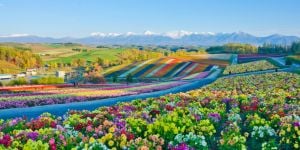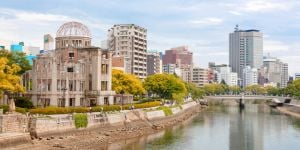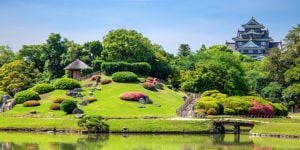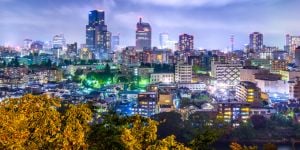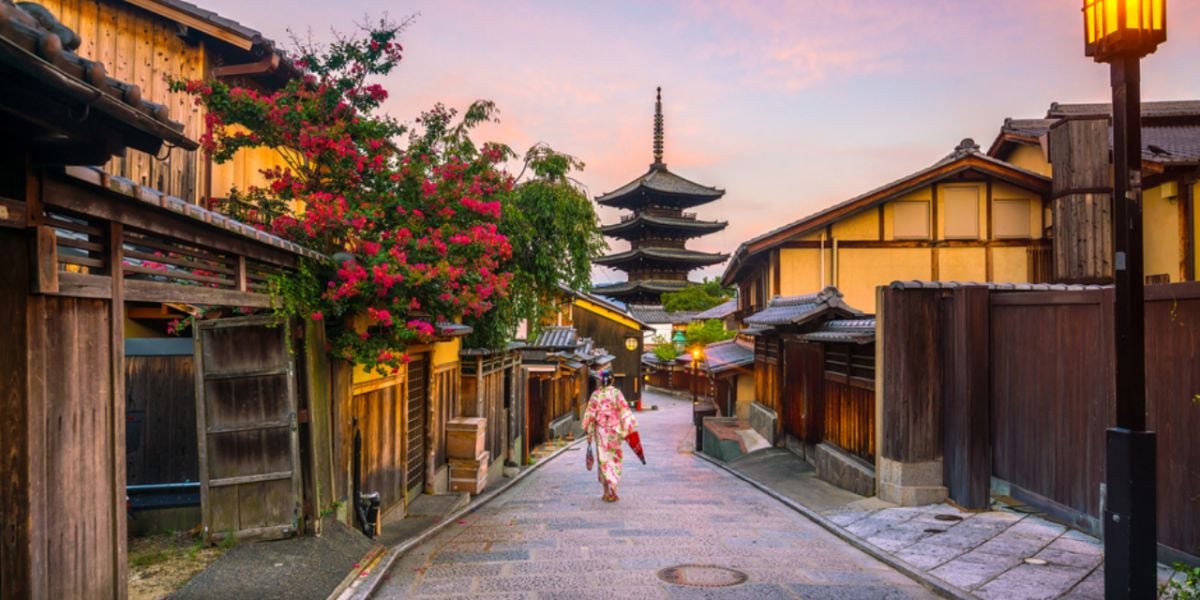
Looking to live in the ancient capital of Japan? Kyoto is an emblematic city known all over the world. It is also a prefecture that preserves some of its localities from tourist invasion. In fact, there is a difference between Kyoto for tourists and Kyoto for residents. The Japanese are the first to be surprised. Is it cool to live in the former imperial capital? What about other areas of the prefecture? Here is a practical guide on how to find a place to live in Kyoto.
Kyoto: the prefecture or the city?
Throughout this article, we will focus on Kyoto Prefecture. Its population was 2,533,821 as of Jan 1, 2024. The prefecture is divided into 26 municipalities, comprising 15 cities, 10 towns, and one village, from Kyotango in the North to Soraku in the extreme South.
Kyoto, the capital, is the largest city in the prefecture, with 1,441,419 inhabitants as of Jan 1, 2024. It is also the most touristy city, visited by millions of Japanese and foreign visitors. If COVID halted the tourism craze, the reopening of the Japanese borders is gradually reviving the sector. This is good news for the tourism industry, but it is also bad news for the inhabitants, who sometimes feel overwhelmed by the flow of visitors.
The other major cities of Kyoto Prefecture
The other big cities of the prefecture have much fewer inhabitants than Kyoto. The second big city, Uji, is located South of the prefecture and has 175,370 inhabitants. The third city, Kameoka, counts 85,002 people West of the capital. Nagaokakyo, with 81,865 inhabitants, is situated Southwest of the capital.
Many inhabitants choose to settle in cities close to Kyoto, but some even go to live in the neighboring prefectures. The coastal city of Otsu, east of the capital, is in Shiga Prefecture. On the other side is Osaka's prefecture, with the cities of Shimamoto, Takatsuki, and Hirakata.
The smaller towns and villages in Kyoto
Others choose to remain in the prefecture but stay in small towns and villages and enjoy the countryside. They decide to rent or buy a house in places like Ujitawara, where there are 8,575 inhabitants or in Ide, where 7,105 people live; in Wazuka, with 3,197 residents; in Minamiyamashiro with 2,235 residents; in Ine, the smallest town with 1,789 residents or even in Kasagi which has a population of 996.
The advantages are found both in the quality of life and the daily cost of living. In these small towns, one can enjoy the quietness that one cannot find in the city center of Kyoto. Housing is cheaper, as well as food (Source: Kyoto prefecture estimated population).
Districts of Kyoto City
The capital city is divided into 11 wards ("ku"s in Japanese). As of Jan 1, 2024, the most populated is the small Fushimi-ku, in the South, with 271,946 inhabitants. Then you have Ukyo-ku, much bigger than Fushimi since it stretches from Northwest to Southwest but counts 199,303 inhabitants.
Sakyo-ku is the third most populated district, with 164,297 inhabitants. The district extends from northeast to southeast. The 4th most populated is Nishikyo-ku, South of Ukyo-ku, with a population of 144,813. The other districts, Yamashina, Nakagyo, Kita, Minami, Kamigyo, Shimogyo, and Higashiyama have a population between about 33,000 and 131,000 (source: Kyoto prefecture estimated population).
Kyoto is a student city
By October 2023, people in their 40s, 50s, and older comprise a significant portion of Kyoto's population with 886,849 inhabitants, making up 61.44% of the city's population. There are 186,872 people in their 40s; 207,772 in their 50s; and a little more than 300,000 people between 70 and 89 years old.
However, the youth are very well represented, with 121,668 teens aged 10 to 19. Young adults aged 20 to 29 are almost 196,273, and the number of people in their thirties is 149,132 (source: Kyoto city estimated population by age).
Kyoto attracts young people because of its vibrant student life. Many, indeed, choose to study in the ancient imperial city. This is something to consider if you want to move to Kyoto, especially if you are moving with your family or plan to start one.
Various districts, different atmospheres
Are you more interested in the city center or the outlying suburbs? Do you need housing close to transportation or specific infrastructures? You will not look for accommodation in Kyoto in the same way according to your needs and expectations. Take the time to look at the different districts of Kyoto and the other prefecture cities.
Kyoto City
Downtown
This is where the former Imperial Palace, the residence of the shoguns before the Edo period, is located. The famous Toyotomi Hideyoshi resided here. The downtown area is a tourist hotspot divided into several districts: Kamigyo, Nakagyo, and Shimogyo. Each of them has a unique atmosphere.
The city center is also home to Kyoto's futuristic-looking train station, close to which you can find temples, gardens, and shopping areas, not to mention the famous International Manga Museum. The downtown area is a vibrant spot, day and night, often crowded during the tourist season, with always-packed commuters.
The Arashiyama ward
Arashiyama, located in the West of the city, is much quieter than the city center, as it is quite far from the center. Temples and parks there are an invitation to meditation. The place is known for its bamboo grove, which extends over 500 meters.
The Higashiyama ward
Located East of Kyoto, at the foot of a mountain, Higashiyama is another quiet place. It is also home to many UNESCO World Heritage sites.
The Gion district
Now, back to the tourist areas, especially in the world-famous Gion. The district is known around the world as being the Geishas' headquarters. Historically, the town was founded for travelers and was initially thought of as a resting place where people would discover the Yasaka Shrine. It was soon taken over by geishas, refined artists locally known as geikos.
From there on, imaginary Western minds gave way to farfetched fantasies about the geisha's role. Needless to say, because of this, Gion is regularly invaded by tourists. For the cherry blossom season (sakura), they are even more numerous in spring.
The Southern District
Welcome back to the calm of Kyoto's southern district with its peaceful walking paths, temples, and sanctuaries, far from the masses.
The Northern District
The Northern district is a little busier than the South but far less than the tourist districts. Nature, temples, and sanctuaries are everywhere. Some sites are classified as World Heritage by UNESCO.
Kyoto Prefecture
Seeking more wilderness? Well, Ine is a small town located at the northern end of the prefecture. It is a small floating fishing village. It is recognizable by its more than 200 "funaya", or houseboats. Further North lies Kyotango at the end of a two-hour bus ride from Kyoto. It is a town by the sea, famous for its peace and quiet. People come there with their families to enjoy the beach and the good life. The other countryside towns of Maizuru, Miyazu, or Ayabe are also valued for their quietness. The three villages have also invested to better welcome foreigners. Their websites are available in several languages (English, Spanish, Korean, etc.).
Accommodation types in Kyoto
Whatever the country you live in, choosing your accommodation is both an adventure and an investment. Before considering home decor, some questions must be asked, like:
- How long will you be in the area (in this case, in the prefecture or city of Kyoto)?
- What is the purpose of your trip?
- Are you on an expat contract, and do you intend to leave when your mission has been completed?
- Are you looking to settle in Japan in the long run, or are you just a visitor or a business traveler?
- What is your budget?
- Are you looking for a job, or do you already have one?
- What are your needs?
- Do you prefer the city or the countryside?
- Do you need to adapt accessibility to your home, for a wheelchair or medical bed, for example?
The answers to these questions will allow you to refine your search better.
The different home configurations in Japan
You might get confused with how Japanese people label their properties on the market. You might even ask yourself: “What is 1LDK, 1R, or 3K?”
Well, in Japan, people label and call their house by a set of characters, usually composed of a number followed by the initial letters corresponding to the English name of the room in the house. The number indicates the number of rooms. R (for room) indicates the bedroom; L is the living room; D refers to the dining room, and K indicates the kitchen.
What about the toilet and the bathroom? They are also mentioned in the description of the accommodation. You will also be told whether the rooms are Western or Japanese style.
Therefore, 1LDK refers to a one-bedroom apartment with a living room, dining room, and kitchen. 1R is a single room, for example, in a sharedhouse/guesthouse. Likewise, a 3RK is an accommodation with three bedrooms and a kitchen.
How do we measure the area of a house in Japan?
Without surprise, living in the heart of Kyoto will be more expensive than living elsewhere. Many people opt for Osaka, the big city next door. You can find more accommodation there, sometimes at a better price, but in the end, everything depends on what you want to buy or rent and your budget.
The size and available options also matter. Do you prefer a small place in the heart of Kyoto, or do you want more space, even if it means moving away from the city center?
Regarding real estate, when they talk about space, they talk about surface area, but how do we measure the size of a house in Japan? Traditionally, they would count in "jo", which is the size of a standard tatami mat, which is the traditional Japanese mat used for flooring. It still equips typical Japanese homes, at least partially.
1 jo is about 1.62 m². For example, a room of 7 Jo = 11.34 m², but you'll note that most ads have adopted the universal metric system, that is, in m². So, worry not! You will have no trouble deciphering the surface area of your home.
Rental prices in Kyoto
Apartments, houses, sharehouses/guesthouses
It is complicated to determine a price range here. It all boils down to your budget, the place you want to live in, the surface area, and the year of construction, amongst other criteria.
For example, you can find a small studio of about 17m² in Kyoto for about 37,000 yen per month, or you can get a small 20m² apartment near a station with a kitchen for 41,200 yen per month. In this case, the building will be a bit older: 1998 construction year for the 17m² apartment, and 1969 for the 20m² room.
In Maizuru, a country town in Kyoto prefecture, you may find larger apartments ranging from 20 to 23m², built in 2009, for about 46,500 to 53,500 yen per month. The same differences are observed for houses and sharehouses/guesthouses.
Moving away from downtown Kyoto is often necessary to enjoy the quietness of the Kyoto way of life. It is also possible to go even further and find accommodation in another prefecture city.
Hotels and ryôkans
In case you are just passing through and have the required budget, why not go back to the Japan of yesteryears and spend a few nights in a "ryôkan", the traditional Japanese inn? One night can cost from 50,000 to 70,000 yen or more. It all depends on the location of the "ryôkan" and its optional services and amenities, like a private onsen.
As for hotels, there are luxury ryôkans and more affordable ones. Regarding hotels, prices are still fluctuating. Once again, everything depends on the location and the standing. You can find a hotel room for 10,000 yen per night and one for 50,000 yen or more. Also, be careful about your booking period. If you plan to go during the high tourist season, like in spring, expect the prices to increase.
Questions to ask yourself before buying or renting accommodation in Japan
Whether you have decided to live in the prefecture or city of Kyoto or anywhere else in Japan, start by finding answers to these questions:
What is the purpose of your stay in Japan? What type of visa do you have?
- Are you traveling alone or with friends and/or family?
- What is your budget?
- Are you already in Japan or not? Are you planning to stay for a long period? For what reasons?
- Do you prefer the countryside, the beach, the mountains, or the city?
- Are you more of a big city admirer, or do you prefer small towns?
- Do you speak Japanese?
- Do you need to live close to public transport facilities?
- What other facilities are you looking for in your neighborhood (school, hospital, etc.)?
Regarding accommodation, ask yourself the following questions:
Do you want a furnished or unfurnished apartment?
- What would be the ideal area for you?
- What services do you need (laundry, bicycle parking, parking, etc.)?
- Are agency fees and other costs a barrier or not?
- Do you have a pet?
- Do you plan to engage in any potentially noisy activity (music, etc.)?
Finding a real estate agency in Kyoto
You can choose between two types of agencies: the traditional fudôsanya, Japanese real estate agencies, and agencies that specialize in dealing with foreigners. Note that traditional agencies are making more and more efforts to adapt to the new profiles of their customers. Some of them readily offer services in English, for example. Nevertheless, it is recommended to have a good grasp of the Japanese language to ease the exchanges and to better integrate in Japan.
To start your accommodation search in Kyoto, check out the websites of real estate agencies such as Fudosan Honpo or Daiwa Kosan. However, these websites do not have an English version. Alternatively, you can find local agencies and canvass the local merchants.
Things to keep in mind when renting or buying property in Kyoto
In Kyoto, as elsewhere in Japan, the ground floor counts as a floor. If your apartment is on 1F, where F refers to Floor, it is located on the ground floor. If your apartment is on 2F, it will be on the first floor.
Many apartments in Japan are poorly insulated. They are cold in winter and hot in summer, with walls that are too thin to muffle the noise and conversations of the neighbors.
Moreover, pay close attention to the year of construction of the house. Older buildings may not meet anti-seismic standards. The same caution applies to building materials. Japan used to be a major importer of asbestos. This practice only stopped in 2012. So many homes built before this date may not be asbestos-free.
You can buy an apartment or a house in Japan, even if you are a foreigner. Obtaining a loan, however, will depend on your status. The longer your visa and the higher your salary, the more confident the banks will be. They will be even more so if you have a valued profession as per Japanese social standards. These include lawyers, engineers, senior managers, doctors, etc.
Extra tips for finding accommodation in Kyoto
Keep in mind that in Japan, many landlords are still reluctant to rent their properties to foreigners. The emergence of specialized rental agencies for foreigners has brought a fresh wind of change to the market. However, despite the slow revolution, don't be surprised if you still face some hostile reactions, especially if you choose to rent or buy property alone.
The Japanese are the first to question whether or not to move to Kyoto. They are apprehensive about the massive tourist influx. Fortunately, the prefecture has many quiet places to stay. Even in the capital, you can make your own little peaceful place. Nevertheless, the presence of tourists is a fact that should not be overlooked.
Come to Kyoto with a good knowledge of Japanese; this will greatly facilitate your accommodation search. Take the time to visit the area you are looking for at different times of the day. Test the waters during a vacation to see if it becomes an overcrowded tourist attraction.
Take the time to explore the other side of Kyoto. The prefecture's countryside, towns, and villages hide many secrets. It is up to you to find the one that suits you.
Useful links:
We do our best to provide accurate and up to date information. However, if you have noticed any inaccuracies in this article, please let us know in the comments section below.
